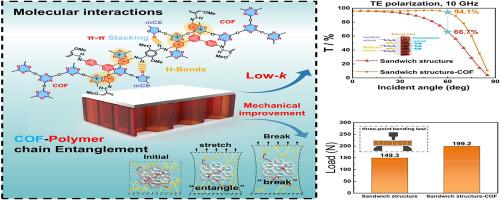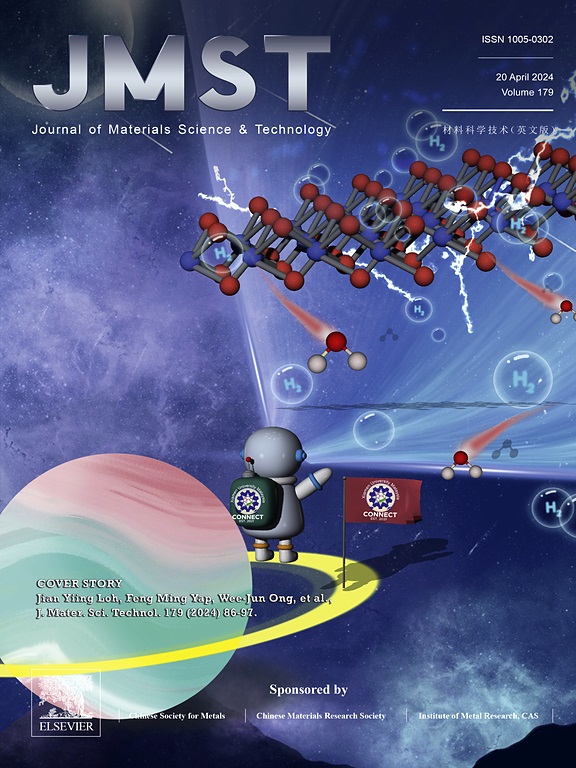Dielectric-mechanical couple effect of COF cyanate derived from dual functions of molecular interaction and chain entanglement
IF 11.2
1区 材料科学
Q1 MATERIALS SCIENCE, MULTIDISCIPLINARY
引用次数: 0
Abstract
The rapid advancement of radar and 5G communication technologies has created an urgent need for materials that possess both low dielectric constants and superior mechanical strength to ensure efficient signal transmission and minimal loss. Herein, a synergistic effect of multiple regulation strategies from the atomic scales to the molecular scales was proposed to develop Covalent Organic Frameworks (COFs) modified cyanate ester resins (COF-mCE). The strategy has proven highly effective in enhancing both dielectric and mechanical properties. With only 3 wt% COFs, the dielectric constant of COF-mCE is reduced from 3.32 to 2.84 at 1 MHz. Meanwhile, the mechanical performance of COF-mCE composites exhibits substantial improvements, with flexural strength increasing by 42.6% and tensile strength by 52.1% compared to pure mCE. The investigation explores that hydrogen bonding and π-π stacking interactions restrain the polarization feature and the mechanical property improvements of the COF-mCE derived from the entanglement effect of COF-polymer chains. Furthermore, the 3D-printed COF-mCE honeycomb structure demonstrates excellent electromagnetic wave transmittance and low reflectance, achieving a transmittance of 94.1% at 10 GHz with a 60° incidence angle. This multi-scale design strategy offers new insights into the development of low-k dielectric material for next-generation electronic science applications.

求助全文
约1分钟内获得全文
求助全文
来源期刊

Journal of Materials Science & Technology
工程技术-材料科学:综合
CiteScore
20.00
自引率
11.00%
发文量
995
审稿时长
13 days
期刊介绍:
Journal of Materials Science & Technology strives to promote global collaboration in the field of materials science and technology. It primarily publishes original research papers, invited review articles, letters, research notes, and summaries of scientific achievements. The journal covers a wide range of materials science and technology topics, including metallic materials, inorganic nonmetallic materials, and composite materials.
 求助内容:
求助内容: 应助结果提醒方式:
应助结果提醒方式:


